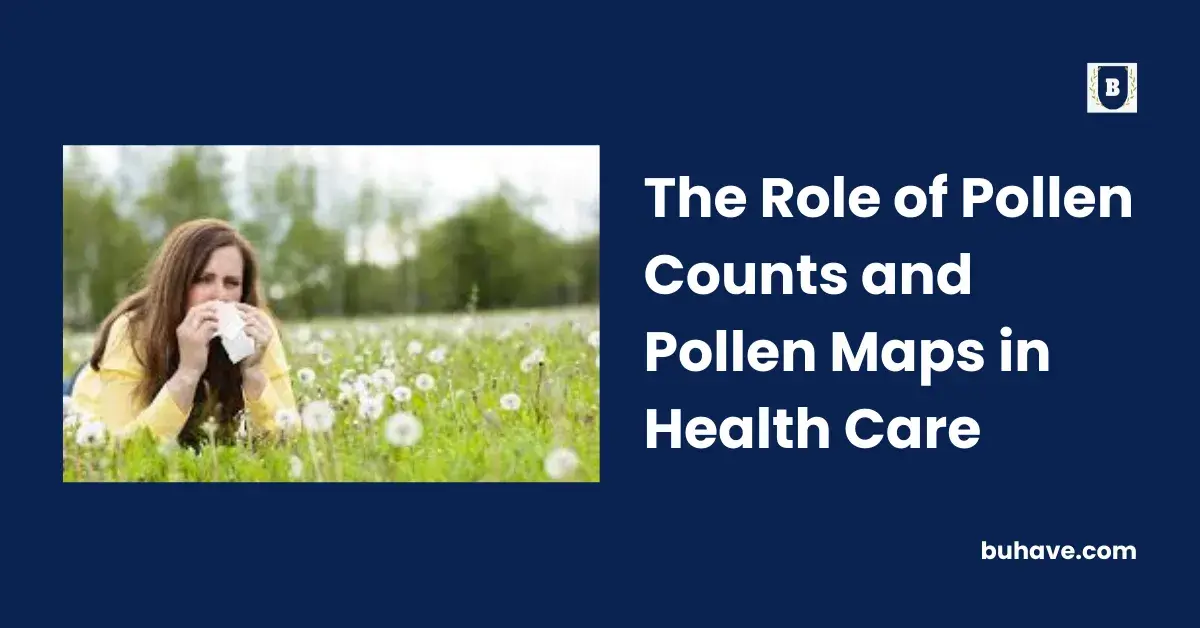Introduction:
Pollen allergies, also known as hay fever or allergic rhinitis, affect millions of people worldwide. The presence of pollen in the air can trigger allergic reactions, causing symptoms such as sneezing, itching, congestion, and watery eyes. Managing these allergies becomes crucial for individuals’ well-being and overall public health. In recent years, advancements in technology have led to the development of tools like pollen counts and pollen maps, which provide valuable information about pollen levels in specific areas.
In this blog, we will explore the role of pollen counts and pollen maps in health care, highlighting their importance in understanding, managing, and mitigating the impact of pollen allergies.
Understanding Pollen Counts:
Pollen counts refer to the measurement of pollen grains present in a specific volume of air during a designated period. These counts are typically expressed as the number of pollen grains per cubic meter of air. By monitoring pollen counts, health care professionals can gain insights into the severity of pollen allergies in different regions and provide appropriate guidance and treatment options to patients. Pollen counts help individuals with allergies plan their outdoor activities and take necessary precautions to minimize exposure to allergens.
Pollen Maps: Visualizing Pollen Data
Pollen maps offer a visual representation of pollen counts in a particular area, often displayed on a geographic map. These maps provide an intuitive way to understand the distribution and concentration of pollen across different regions. By using colors or symbols, pollen maps help individuals identify areas with high or low pollen levels, allowing them to make informed decisions about where to travel, live, or spend time outdoors. Pollen maps are especially useful for people who are highly sensitive to specific types of pollen and need to avoid exposure to minimize allergy symptoms.
Personalized Pollen Data: Pollen Count by Zip Code
Pollen counts can be further customized to provide data specific to a particular location, such as pollen count by zip code. This level of granularity allows individuals to access detailed information about pollen levels in their immediate vicinity. Pollen count by zip code helps people plan their activities accordingly, whether it’s choosing a suitable time for outdoor exercise or identifying areas with lower pollen concentrations for temporary relief. Additionally, health care providers can use this information to offer personalized advice to their patients, tailored to their specific geographic location.
Allergy Forecasting and Early Warning Systems
Pollen counts and maps play a critical role in allergy forecasting and early warning systems. By analyzing historical pollen data and considering weather patterns, experts can predict future pollen levels and issue forecasts. Allergy forecasts provide valuable information about expected pollen concentrations, helping individuals with allergies plan their activities in advance. Furthermore, early warning systems alert health care providers and vulnerable individuals to periods of high pollen levels, enabling them to take preventive measures and adjust treatment plans accordingly.
Supporting Research and Public Health Initiatives:
Pollen counts and pollen maps also contribute to research and public health initiatives related to pollen allergies. Researchers can analyze long-term pollen data to identify trends, study the impact of climate change on pollen levels, and develop strategies to manage allergies effectively. Public health agencies can utilize pollen maps and counts to identify regions with higher prevalence of allergies and pollen-related health issues, directing resources and interventions where they are most needed.
Integration with Mobile Apps and Wearable Devices
To make pollen information easily accessible, many mobile apps and wearable devices now integrate real-time pollen data, including counts and maps. These apps provide users with personalized alerts, pollen forecasts, and information about pollen types prevalent in their area. By harnessing the power of technology and combining it with pollen data, these tools empower individuals to manage their allergies proactively and make informed decisions about their daily activities.
Conclusion
Pollen counts and pollen maps play a crucial role in health care, particularly in managing and mitigating the impact of pollen allergies. These tools provide valuable information about pollen levels in specific areas, allowing individuals to plan their activities, take necessary precautions, and seek appropriate treatment.
By visualizing pollen data through maps and integrating it with mobile apps and wearable devices, pollen information becomes easily accessible and personalized. Additionally, pollen counts and maps support research efforts and public health initiatives, enabling experts to study trends, issue forecasts, and direct resources where they are most needed.
With the continued advancement of technology and the availability of accurate pollen data, individuals and healthcare professionals can work together to minimize the impact of pollen allergies on overall well-being and public health. Companies have already developed such tools to help their customers build better solutions using maps and data. Check out Ambee’s pollen maps page to get an instant overview of how pollen count affects certain areas and how you can avoid pollen to live healthily.
– If you are looking for guest posts in health “write for us” now.

